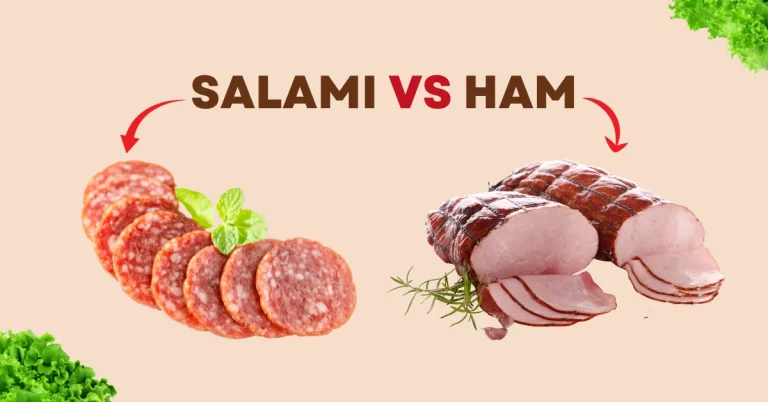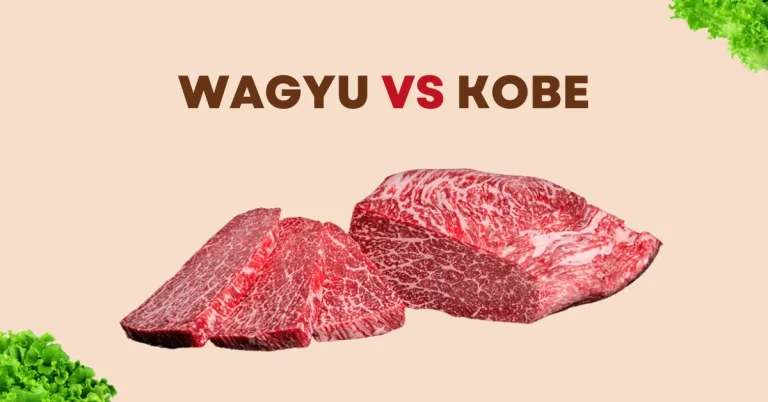How To Prevent Meat From Drying Out In A Vertical Smoker

If you are a pitmaster, you know the struggle of BBQ grilling in a vertical smoker. Keeping your meat juicy and tender can be a challenge. But fear not!
With a few simple tricks, you can prevent your meat from drying out and ensure it comes out succulent and flavorful every time. Whether you’re smoking brisket, ribs, or chicken, mastering the art of moisture retention is key to creating mouthwatering barbecue that will impress your friends and family. In this guide, I’ll explore how to keep your meat moist and delicious throughout the smoking process.
1. Salt the Meat First
Meat salting is an important step in the preparation of meat for smoking. Adding salt to meat adds flavor and helps prevent it from drying out. This process, called denaturing, breaks down the protein slightly, allowing moisture to be retained.
Whether dry brining with kosher salt or a liquid salt-based brine, the goal is to ensure juicy, flavorful results. A liquid brine is a buffer for lean cuts, preventing dryness during smoking.
2. Inject the Meat
Another effective way to prevent meat from drying out is to inject the meat. You can inject fat, salt, and spices deep into the meat with a meat injector, preventing it from drying out. This technique ensures that tougher cuts of beef, like brisket, remain juicy and flavorful.
Here is how to Inject Brisket:
- A stainless steel injector with a large needle and at least 2 ounces capacity is used.
- Fill the injector in a deep container or tall glass for easy refilling.
- Insert the needle at a slight angle in a checkerboard pattern every 1-2 inches across the brisket, pushing the plunger slowly as you withdraw.
- Focus on injecting the lean, Flat section of the brisket to keep it moist.
- Use flavors like butter, beef stock, or vinegar to enhance taste without overpowering the beef.
- Don’t let acidic injections sit too long, as they can make the meat too tender.
- Use 1 ounce of injection per pound of meat.
- After injecting, Pat the brisket dry with paper towels to help the rub stick better.
3. Use Indirect Heat to Smoke Your Meat
Smoking meat requires indirect heat to keep it juicy and flavorful. Direct heat can dry out meat quickly, so it’s important to avoid placing it directly over coals. Instead, opt for indirect heat by placing the meat away from the fuel source. Whether you’re using an offset smoker or creating separate zones in your smoker, the key is to keep the meat from coming into direct contact with the heat.
To ensure moist and tender results, place the meat on the grinder part that is not directly over the coals. This method allows for a slower cooking process, which doesn’t risk drying out the flavors. Remember, indirect heat is essential to achieving optimal results when smoking meat.
4. Marinate Your Meat Before Smoking It
Marinating your meat for 24 hours keeps it moist and flavorful. Fill a dish with a mixture of water, vinegar, juice, and spices, then soak your meat for the day. This process helps your meat absorb the delicious flavors while preventing it from drying out during smoking.
Brining is another option for adding moisture to your meat before smoking. Unlike marinating, brining uses a saltwater solution called brine. Both marinating and brining are effective ways to keep your meat juicy and flavorful. So, whether you choose to marinate or brine, your smoked meat will be delicate and tasty.
5. Use More Smoking Chunks and Less Charcoal
To keep your meat juicy and full of flavor, focus on using more smoking chunks and less charcoal in your smoker. Charcoal provides heat, but too much can dry out your meat. Opt for a large pile of smoking chunks and a small amount of charcoal to maintain a low cooking temperature. If your smoker needs more heat, add a few extra charcoal pieces sparingly.
6. Add a Bowl or Pan of Water to Your Smoker
Add a bowl or pan of water to your smoker to keep your meat juicy while smoking. This helps create steam that moistens the meat and locks in its juices. Whether your smoker has a built-in water pan or not, placing a bowl of water inside has the same effect. As the water evaporates due to the heat of the smoker, it coats the meat, preventing it from drying out.
Remember to check and refill the water every 30 minutes to maintain the moisture level. A bowl or pan filled with water keeps your meat juicy, and your smoker maintains its cooking temperature.
7. Wrap Your Meat in Aluminum Foil
Wrap your meat in aluminum foil to retain moisture while smoking. This helps prevent it from drying out, keeping it juicy and tender. Be sure to cover the entire piece of meat tightly to minimize moisture loss. However, don’t wrap it for a few hours in the smoking process so that the smoke flavor can develop properly.
Remember, foil prevents moisture but can also prevent a smoky flavor if used too soon. So, start without foil, then wrap it later for best results. Keep your meat deliciously moist and flavorful with this simple technique!
8. Control Your Smoker’s Temperature
Properly controlling the temperature of your smoker is critical to juicy, perfectly cooked meat. Aim for 225 to 250 degrees Fahrenheit throughout the cooking process. Monitor the temperature using a reliable digital thermometer, as built-in gauges can be inaccurate. Remember, hot spots are common in smokers, so it’s important to know the exact temperature of where the meat sits.
If your smoker has air vents, master their use to regulate airflow and temperature manually. Opening vents increases the temperature while closing them lowers it. By understanding these basics, you’ll ensure your smoked dishes turn out just right every time.
9. Avoid Too Much Thick Black Smoke
When smoking meat, ensure you avoid thick black smoke. Opt for a thin, blue stream instead. Excessive smoke can dry out the meat and make it taste bitter. Aim for a clean-burning fire to preserve the meat’s natural flavor.
Too much thick black smoke can ruin your barbecue experience. It dehydrates the meat and leaves a charred taste.
10. Let the Meat Rest a Little
It is very important to let the meat rest a bit after smoking. When you cut into it immediately, the juices run out, leaving your meat dry. As the meat cooks, the juices pool in the center, and resting redistributes them, making your meat juicier and tastier.
To do this, wait three to five minutes after removing your meat from the smoker. During this time, the juices will spread evenly throughout the meat. After that, you can cut into it without losing moisture. This simple step makes a big difference in the flavor and texture of your smoked meat, ensuring a more enjoyable eating experience.
Does Soaking Smoking Chunks in Water Help?
It is common practice among pitmasters to soak the pieces of the smoker in water before using them in the smoker, but this does not help retain moisture in the meat. Wood, including smoking chunks, doesn’t absorb water effectively, so soaking them won’t make much difference. Even after prolonged soaking, most water remains on the surface and evaporates quickly when exposed to heat.
In fact, soaking can delay the smoking process because wet wood needs time to dry before it can produce smoke. Instead, focus on selecting high-quality smoking pieces and managing the smoking temperature and airflow to achieve the desired results.
Final Thoughts
Smoking meat can be tricky, but you can keep it juicy and delicious with the right technique. Soaking pieces of wood won’t help, but there are other ways to keep the meat moist, like cooking over indirect heat, marinating, using plenty of wood for smoke, wrapping in foil, and letting rest before serving. These steps help lock in moisture and flavor, ensuring your meat always comes out perfectly.

I’m responsible for managing and coordinating content creation, distribution, and optimization. I’m the former editor-in-chief of PMQ Pizza Magazine and have written for several B2B food publications over the years, including Restaurant Hospitality, Flavor & The Menu, Restaurant Business, National Culinary Review, FSR, Restaurant Startup & Growth, and more.






